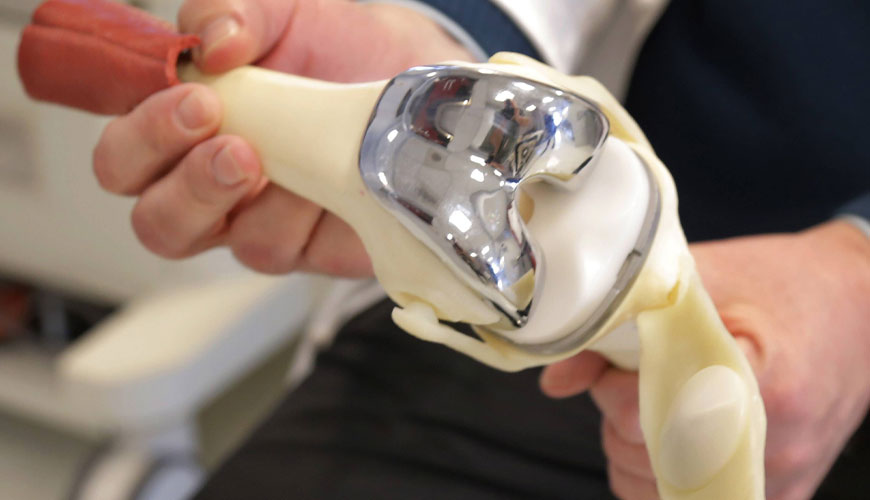

ISO 14243‑1 specifies the relative bending-extension angular motion between articulated components, the pattern of applied force, the speed and duration of the test, the specimen configuration, and the test environment to be used for abrasion testing of total knee joint prostheses.

The total knee joint prosthesis is mounted to an apparatus that applies cyclic flexion/extension angle and contact force variation to the interface between the tibial and femoral components, simulating normal human gait. The tibial component is free to move relative to the femoral component under the action of applied contact forces, this movement with all degrees of freedom expected for the flexion/extension angle following a certain cyclical change.
The applied contact force actions are axial force, anterior posterior force and tibial rotation torque. Axial force follows a certain cyclic variation. The AP force consists of two components, one that is a particular cyclic variation and the other that is proportional to and opposite to the AP displacement.
Similarly, the tibial rotation torque includes two components, one being a particular cyclic variation and the other being a rotational torque that is proportional to and inversely with the amount of tibial rotation. Load movements proportional to AP displacement and tibial rotation correspond to stresses transmitted by anatomical ligaments in normal knee joint function.
Femoral and tibial component: The tibial component should have an articulated surface with normal instant support, unless impractical due to the physical properties of the implant system. If the articulated surface component is secured to the tibial plate with a rim/snap-fit system, the machined replica will provide the same fixation conditions.
EUROLAB assists manufacturers with ISO 14243-1 test compliance. Our test experts, with their professional working mission and principles, provide you, our manufacturers and suppliers, the best service and controlled testing process in our laboratories. Thanks to these services, businesses receive more effective, high-performance and quality testing services and provide safe, fast and uninterrupted service to their customers.
To get an appointment, to get more detailed information or to request an evaluation, you can ask us to fill in our form and reach you.